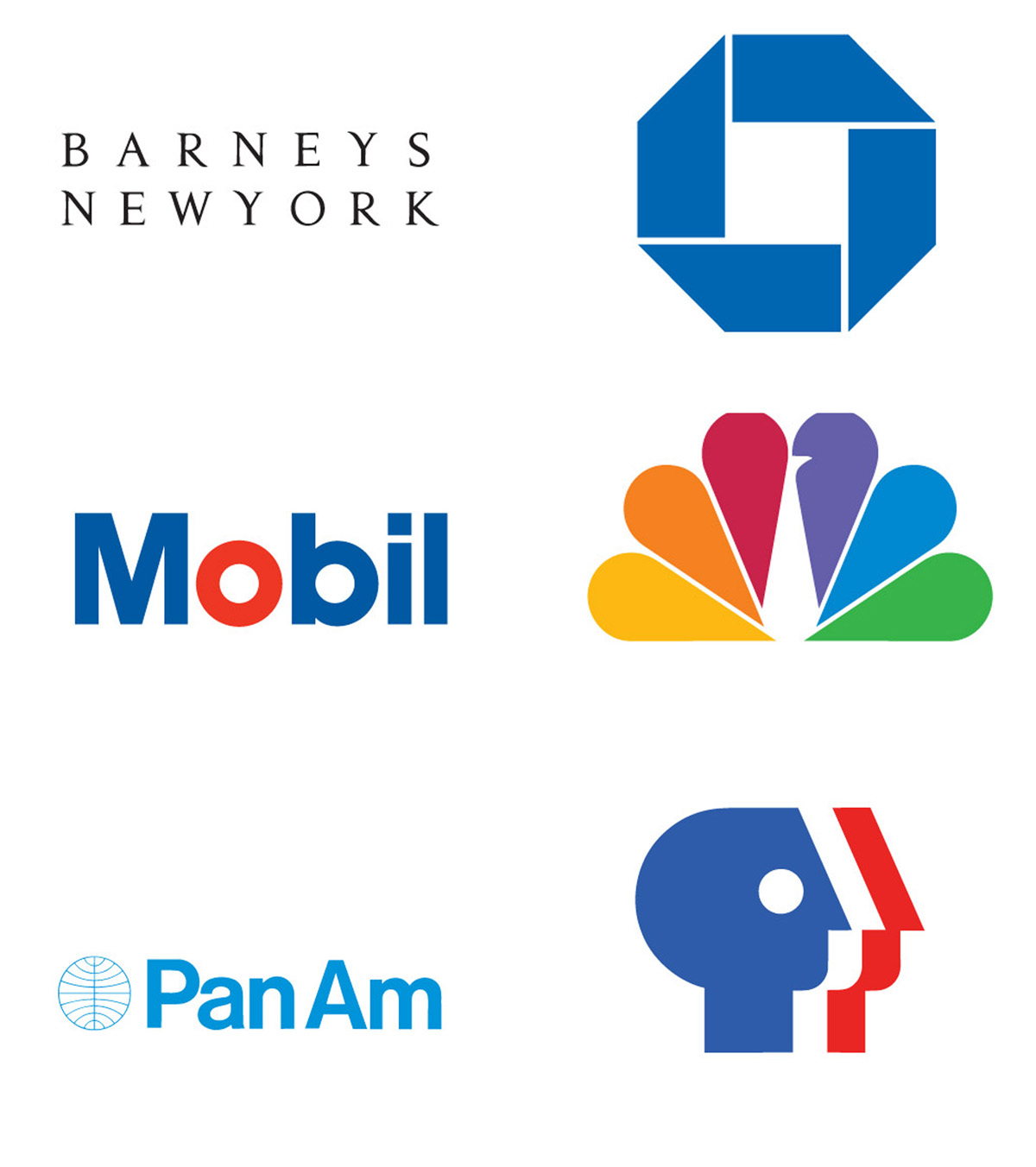“…this hypothesis implies that art history should occupy a central place in virtually any study of human forms of life.”
– Whitney Davis
A General Theory of Visual Culture
One day in Aspen, CO, Ivan Chermayeff, graphic designer, founder of Chermayeff & Geismar & Haviv, and originator of numerous remarkable logos, revised my real-world education in graphic design. Chermayeff, addressing a group of designers at an Aspen Design Conference colloquium, said, “If the message is important, the font and design should be simple.” He added that a stop sign is a classic example. He said this plainly, unobtrusively, modestly voicing a concept that I soon found flickering in my head: A stop sign is a classic example of effective graphic design.
Although I keenly admired his work, I mentally disagreed with Chermayeff’s stop sign comment. I was a bit younger then, an art school inaugurate and the cool chief of a government design group. Hell, I knew everything. I knew to not mix serif fonts, that a graphic visual should have backdrop panels, and that Helvetica Light should never stand alone. Still, Chermayeff’s concept lingered. It rolled around my head like a flounced pinball, but soon notched in and lit up. I finally agreed. It’s true; if a graphic message is genuinely crucial, the visual delivery should be unadorned and easy to comprehend, which certainly makes a stop sign a first-rate prototype for effective design.
Chermayeff designed the Showtime logo, and the logos for National Geographic, Chase Manhattan Bank, the Smithsonian Institution, Mobil Oil (Exxon Mobil), the Library of Congress, and more.
Advertisement
In a 2011 interview, Print magazine writer Aaron Kenedi quoted Chermayeff, who said, “A memorable identity is one that is appropriate, flexible, and distinguished by its originality.” Chermayeff also said a good trademark – a word mark or a symbol – should be devoid of fashion or trend. That makes it potentially iconic if it’s seen for long enough in the right places, he said.

Iconic? Chermayeff designed the 9-ft.-high, pop-art, red “9” sculpture that stands at 9 West 57th St., Manhattan. Fabricated out of half-inch steel plate, the big “9” weighs three tons.
During his career, graphic design as a practice evolved from “commercial art,” i.e., the Norman Rockwell era where, for example, advertising copy for a bank might be accompanied by a gouache-painted illustration of a cheery family standing alongside a bank vault. Designer Saul Bass, another Aspen Design Conference regular, brought the single image logo into design headlines with his 1955 title strip for The Man with a Golden Arm, a movie starring Frank Sinatra as a recovering heroin addict. See the title clip at http://www.artofthetitle.com/title/the-man-with-the-golden-arm.
Chermayeff, Bass, Milton Glaser, Paul Rand and a dozen others changed the design world. Like Frank Lloyd Wright affected architecture, they changed the graphic world by stepping around the complicated and overly ornamental designs of that time and introduced crisp, exciting and singularly explicit images to the world.
The New York Times writer Margalit Fox said Chermayeff’s philosophy of design was as simple as his design results, that his design firm’s work was known for sleek modernist designs, bold primary colors and was among the first to convey corporate identity by means of abstraction.
Advertisement
Like many designers, Chermayeff found ideas in the world around him. Writers David Stuart and Beryl McAlhone in their book A Smile in the Mind: Witty Thinking in Graphic Design, quoted Chermayeff as saying, “I do half my work in taxis, not in the office. As I go from one place to another thinking about things, I may suddenly have an idea and will put it down on paper. Sometimes the idea is okay, but it may evolve into other forms. My ideas may come quickly, or not at all. I have no compunction about driving around and being late if necessary.”
You can see why I liked the guy. Great designs and an intellectual but outside-the-box approach to work. Perhaps the best example of his unique thinking related to the Sept. 16, 2001 New York Times-commissioned illustration that accompanied an Op-Ed article about the Sept. 11 attacks. About this image, The Times’ Margalit Fox wrote, “The design he created is as simple as an illustration can get: just two letters, ‘U.S.,’ in bold black type. But in the finished image, Mr. Chermayeff has wrenched the ‘U’ from its moorings, leaving two jagged stumps where the letter once was. The result is wrenching to see.”
Ivan Chermayeff passed away on Dec. 3, 2017, at age 85.


 Tip Sheet4 days ago
Tip Sheet4 days ago
 Business Management2 weeks ago
Business Management2 weeks ago
 Women in Signs2 weeks ago
Women in Signs2 weeks ago
 Real Deal5 days ago
Real Deal5 days ago
 Benchmarks23 hours ago
Benchmarks23 hours ago
 Editor's Note1 week ago
Editor's Note1 week ago
 Line Time2 weeks ago
Line Time2 weeks ago
 Product Buying + Technology1 week ago
Product Buying + Technology1 week ago

















